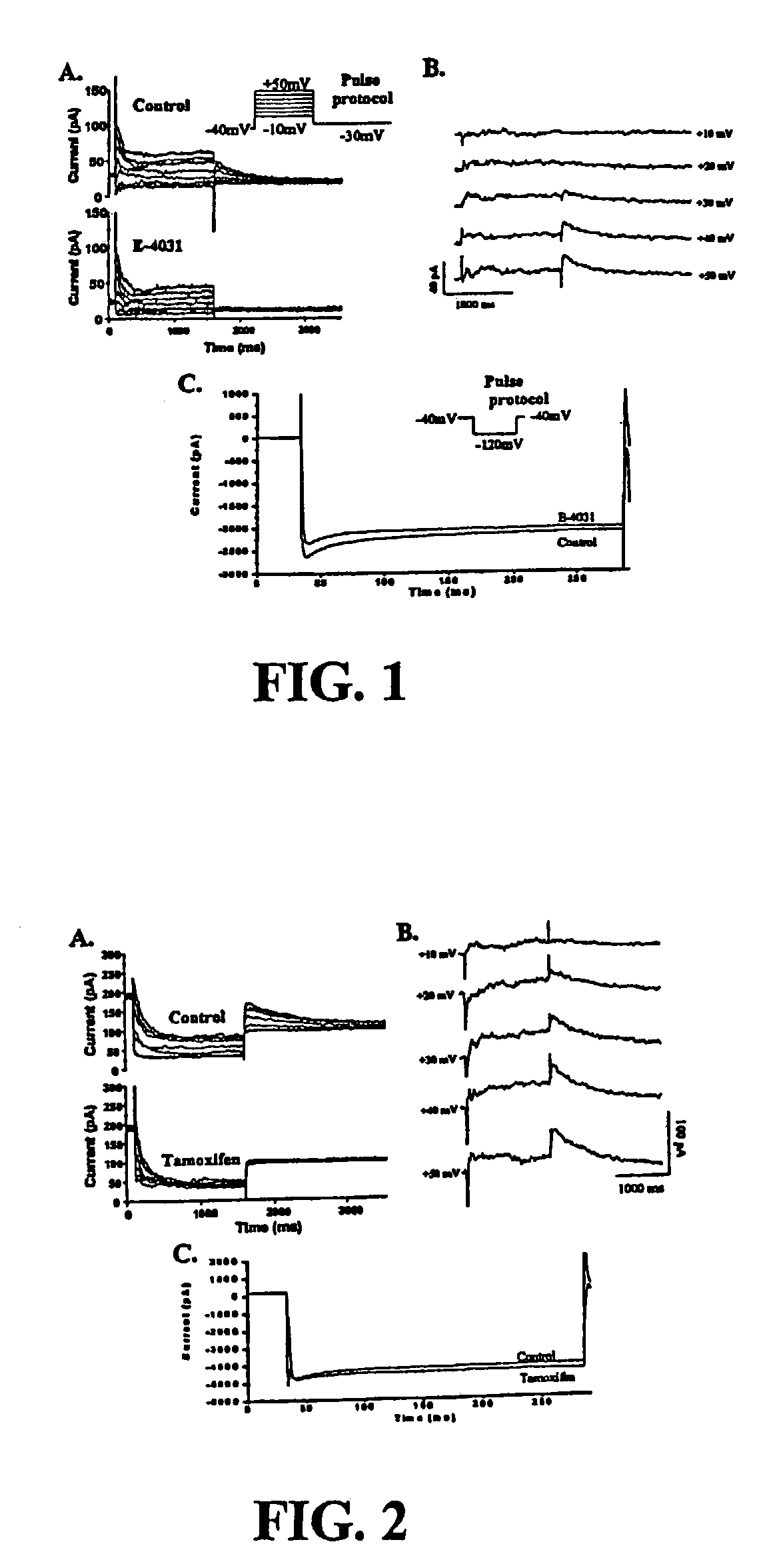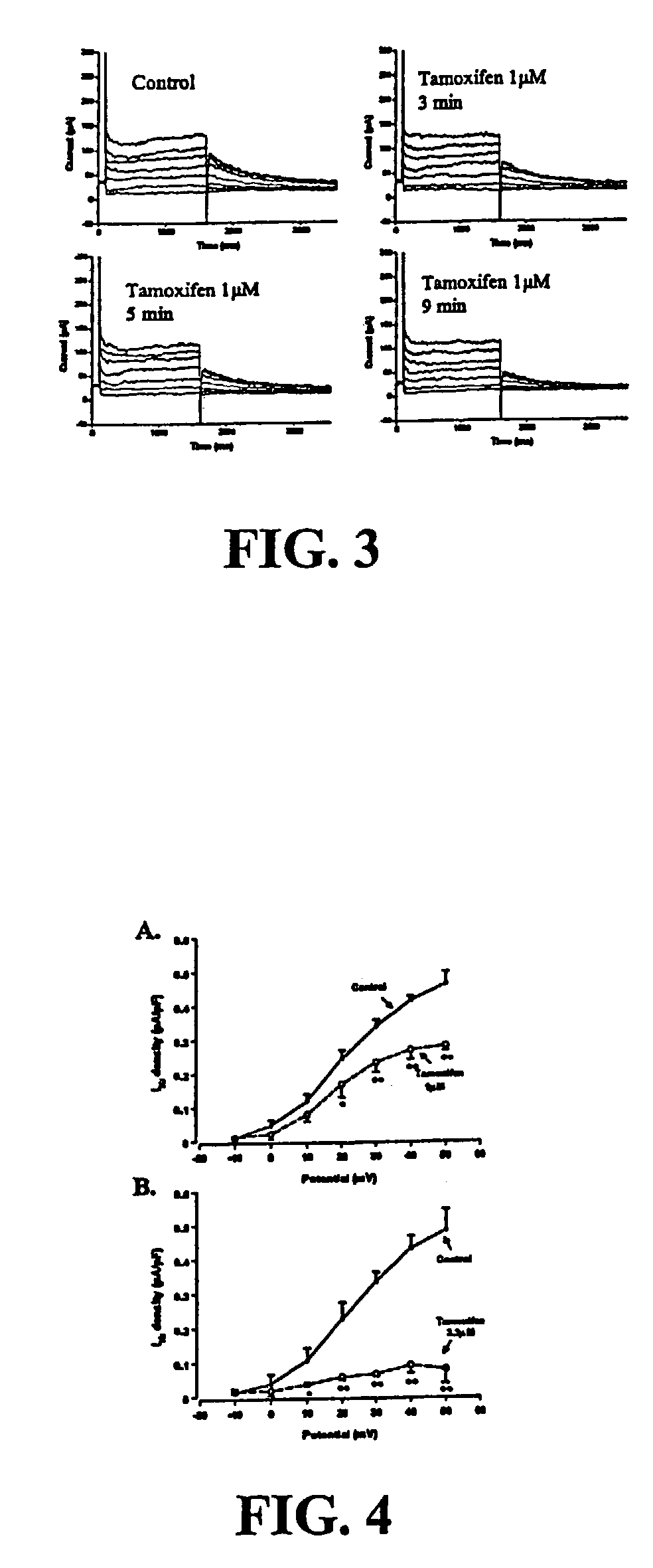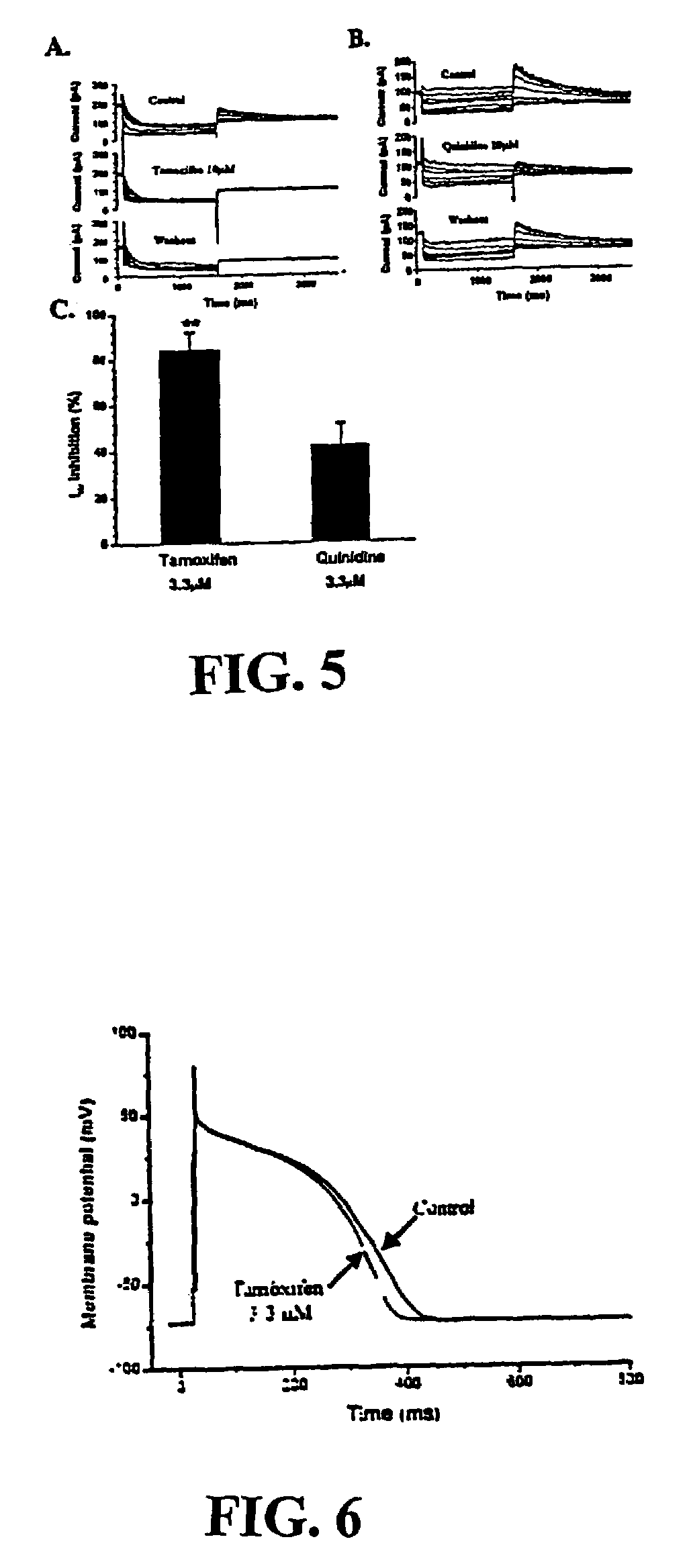Genetic diagnosis for QT prolongation related adverse drug reactions
a gene and gene technology, applied in the field of gene diagnosis of qt prolongation related adverse drug reactions, can solve the problems of not disclosing the method of diagnosis of a patient's predisposition, no association, and considerable controversy, and achieve the effects of reducing the risk of qt prolongation, and increasing the exposure of genes
- Summary
- Abstract
- Description
- Claims
- Application Information
AI Technical Summary
Problems solved by technology
Method used
Image
Examples
example 1
Method and Kit for Determining a Subject's Redisposition to Adverse Reactions to Tamoxifen
[0112]The metabolic pathways of tamoxifen are complex and have been extensively studied. Tamoxifen metabolism involves multiple pathways, and the primary and secondary metabolites have variable pharmacological activities, with certain of the metabolites causing considerable inter-individual variability. In vitro and in vivo studies in humans have shown that the main routes of tamoxifen metabolism include N-demethylation, N-oxidation and 4-hydroxylation (Buckley et al., Drugs 37: 451–90 (1989); and Lim et al., Carcinogenic 15: 589–93 (1994)). Tamoxifen N-demethylation, which appears quantitatively the most important pathway, is primarily catalyzed by CYP3A (Jacolot et al., Biochem. Pharmacol. 41: 1911–9 (1991); (Mani et al., Drug Metab. Dispos. 21: 645–56 (1993)). However CYP2D6 also appears to be a major enzyme that catalyzes tamoxifen 4-hydroxylation (Crewe et al., Biochem. Pharmacol. 53: 171–...
example 2
In vitro Model to Study Tamoxifen
[0148]IKr is one of the major polarizing currents and its block has been implicated in TdP (Carlsson et al., J. Cardiovasc. Pharmacol. 16: 276–85 (1990); Roden et al., Am. Hear. J. 111: 1088–93 (1986); Woosley, Annu. Rev. Pharmacol. Toxicol. 36: 233–52 (1996); and Follmer et al., Circulation 82: 289–93 (1990)). To evaluate whether tamoxifen affects IKr, we first establish the presence of IKr in the chosen model, rabbit ventricular myocytes, using a drug known to be specific for blocker of IKr. Other suitable models, such as feline myocytes or HEK293 cells expressing HERG, can be substituted for rabbit myocytes. FIGS. 1A and 1B show the membrane currents elicited by a 1.5-second voltage-clamp step from −40 mV to different test potentials ranging from −10 to −50 mV in the same cell before (Panel A) and after (Panel B) 5 minutes exposure to 5 μmol / L E-4031, a highly selective IKr blocker (Clay et al., Biophys J. 69: 1830–7 (1995); and Sanguinetti et al....
example 3
Comparison of IKr Block by Tamoxifen and Quinidine
[0153]Quinidine is a drug that has been frequently associated with TdP (Roden et al., Am. Heart J. 111: 1088–93 (1986)). To compare the block of IKr by tamoxifen to that produced by quinidine, we performed the protocol as discussed above, using either 10 μmol / L tamoxifen or 10 μmol / L quinidine. Tamoxifen completely blocked the IKr tail current with no recovery observed after 5 min. washout, whereas the same concentration of quinidine (10 μmol / L) only partially blocked the IKr tail currents, with recovery within 3 min. washout. In other experiments, complete recovery of IKr from quinidine block was usually observed after ˜5 minutes washout, while no recovery from tamoxifen could be detected even after 15 minutes washout. FIG. 5C compares the percentage inhibition of IKr by tamoxifen and quinidine at the same concentration of 3.3 μmol / L. These data show that, at the least potential of −50 mV, tamoxifen produced significantly greater in...
PUM
| Property | Measurement | Unit |
|---|---|---|
| temperature | aaaaa | aaaaa |
| concentration | aaaaa | aaaaa |
| current | aaaaa | aaaaa |
Abstract
Description
Claims
Application Information
 Login to View More
Login to View More - R&D
- Intellectual Property
- Life Sciences
- Materials
- Tech Scout
- Unparalleled Data Quality
- Higher Quality Content
- 60% Fewer Hallucinations
Browse by: Latest US Patents, China's latest patents, Technical Efficacy Thesaurus, Application Domain, Technology Topic, Popular Technical Reports.
© 2025 PatSnap. All rights reserved.Legal|Privacy policy|Modern Slavery Act Transparency Statement|Sitemap|About US| Contact US: help@patsnap.com



